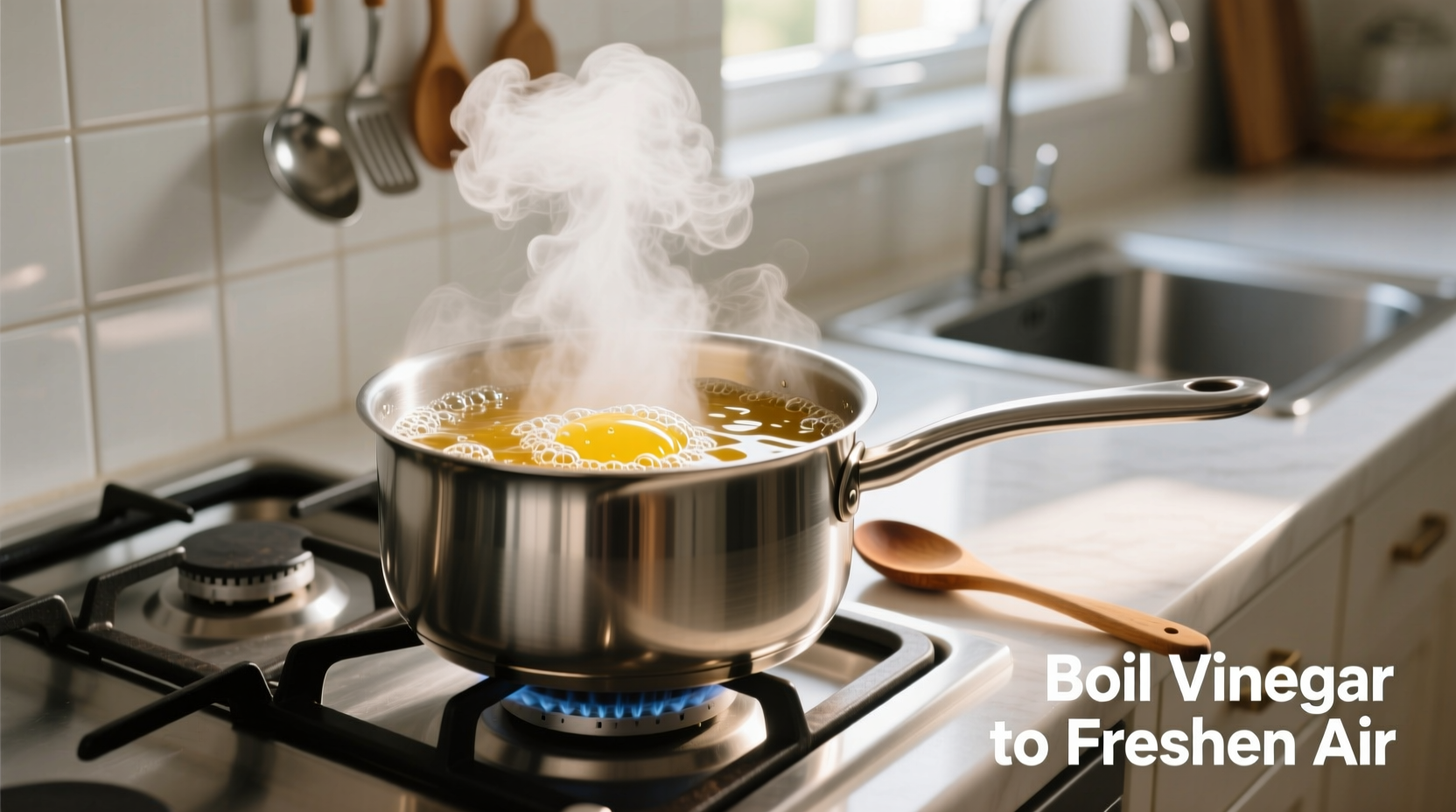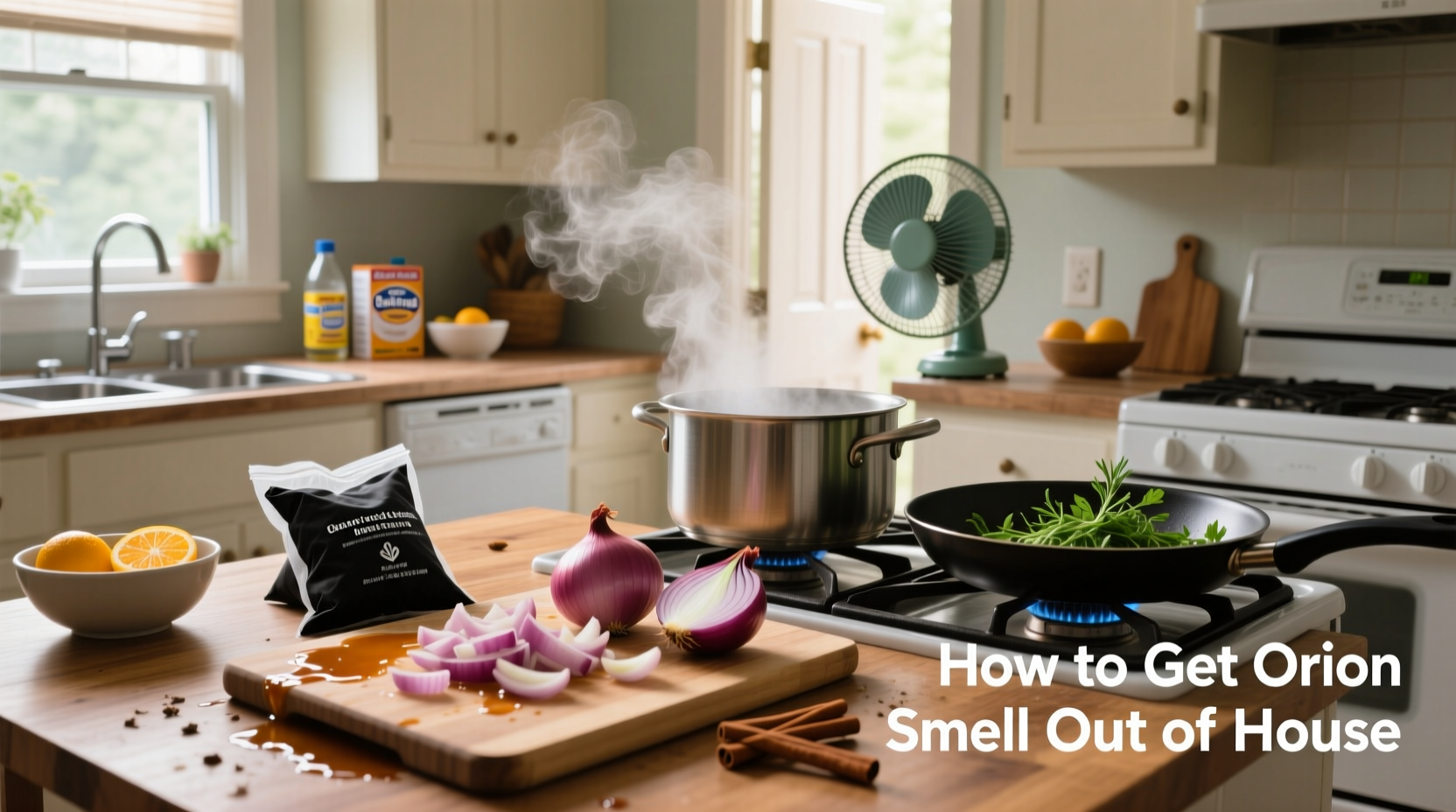Why Onion Smell Lingers in Your Home
When you chop or cook onions, they release sulfur compounds like syn-propanethial-S-oxide that easily bind to surfaces and linger in the air. These volatile organic compounds (VOCs) are particularly stubborn because they're designed by nature to irritate eyes and deter predators—making them exceptionally persistent in household environments. According to the USDA Agricultural Research Service, these compounds can remain active for up to 48 hours without proper intervention.

Immediate Action Plan: First 30 Minutes
When onion odors first appear, your response window is critical. The Environmental Protection Agency recommends addressing cooking odors within the first hour for maximum effectiveness.
Ventilation Strategy
Open windows on opposite sides of your home to create cross-ventilation. This simple technique, verified by University of Minnesota Extension studies, can reduce indoor odor concentration by 60-70% within 20 minutes. Place box fans in windows blowing outward to accelerate air exchange.
Boiling Solutions
Fill a saucepan with 2 cups of water and add either:
- 1 cup white vinegar (most effective for immediate neutralization)
- 3 sliced lemons with 2 tablespoons baking soda (pleasant alternative)
- 1 tablespoon ground coffee (absorbs odors while adding pleasant aroma)
Simmer uncovered for 15-20 minutes. The heat releases molecules that bind with sulfur compounds, breaking down the odor at a molecular level.
| Immediate Method | Time to Effect | Effectiveness | Best For |
|---|---|---|---|
| Vinegar Boiling | 10-15 minutes | ★★★★★ | Kitchen areas, strong odors |
| Lemon-Baking Soda | 20-30 minutes | ★★★★☆ | Living areas, mild odors |
| Coffee Grounds | 30+ minutes | ★★★☆☆ | Bedrooms, sensitive noses |
Medium-Term Solutions: 1-24 Hours After Cooking
When odors persist beyond the initial cooking period, implement these science-backed methods:
Baking Soda Absorption System
Place open containers of baking soda in key areas:
- 1 cup in kitchen (near cooking area)
- ½ cup in adjacent rooms
- ¼ cup in corners where air circulation is poor
Replace every 4 hours for first 12 hours, then leave overnight. Baking soda's sodium bicarbonate molecules chemically react with acidic sulfur compounds, neutralizing them rather than just masking the odor.
Activated Charcoal Placement
Strategically position activated charcoal bags:
- Near doorways to create odor barriers
- Under kitchen cabinets where odors collect
- In trash cans containing onion scraps
Unlike regular charcoal, activated charcoal has a porous structure with 500-1500 m²/g surface area that traps odor molecules through adsorption. The Centers for Disease Control confirms its effectiveness for VOC removal in indoor environments.
Prevention Strategies for Future Cooking
Professional chefs use these techniques to minimize onion odors during preparation:
Cutting Board Protocol
Immediately after chopping onions:
- Rinse board with hot water
- Sprinkle with coarse salt
- Scrub with half a lemon
- Rinse again and air dry vertically
This method, recommended by culinary institutes, prevents sulfur compounds from embedding in wood or plastic surfaces.
Cooking Technique Adjustments
Modify your cooking process:
- Cover pots with lids containing vinegar-soaked paper towels
- Add onions to cold oil rather than hot oil (reduces volatile compound release)
- Use stainless steel utensils which help neutralize sulfur compounds
What Not to Do: Common Mistakes
Avoid these counterproductive approaches:
- Air fresheners alone - merely mask odors without eliminating compounds
- Excessive heat - increases volatility of odor molecules
- Ignoring hidden areas - odors collect in curtains, upholstery, and HVAC filters
When to Seek Professional Help
While most onion odors dissipate within 48 hours, persistent smells after proper treatment may indicate:
- Odors trapped in HVAC systems (requires professional cleaning)
- Hidden onion residue in hard-to-reach areas
- Underlying moisture issues amplifying odor retention
If odors persist beyond 72 hours despite comprehensive treatment, consult an indoor air quality specialist.











 浙公网安备
33010002000092号
浙公网安备
33010002000092号 浙B2-20120091-4
浙B2-20120091-4